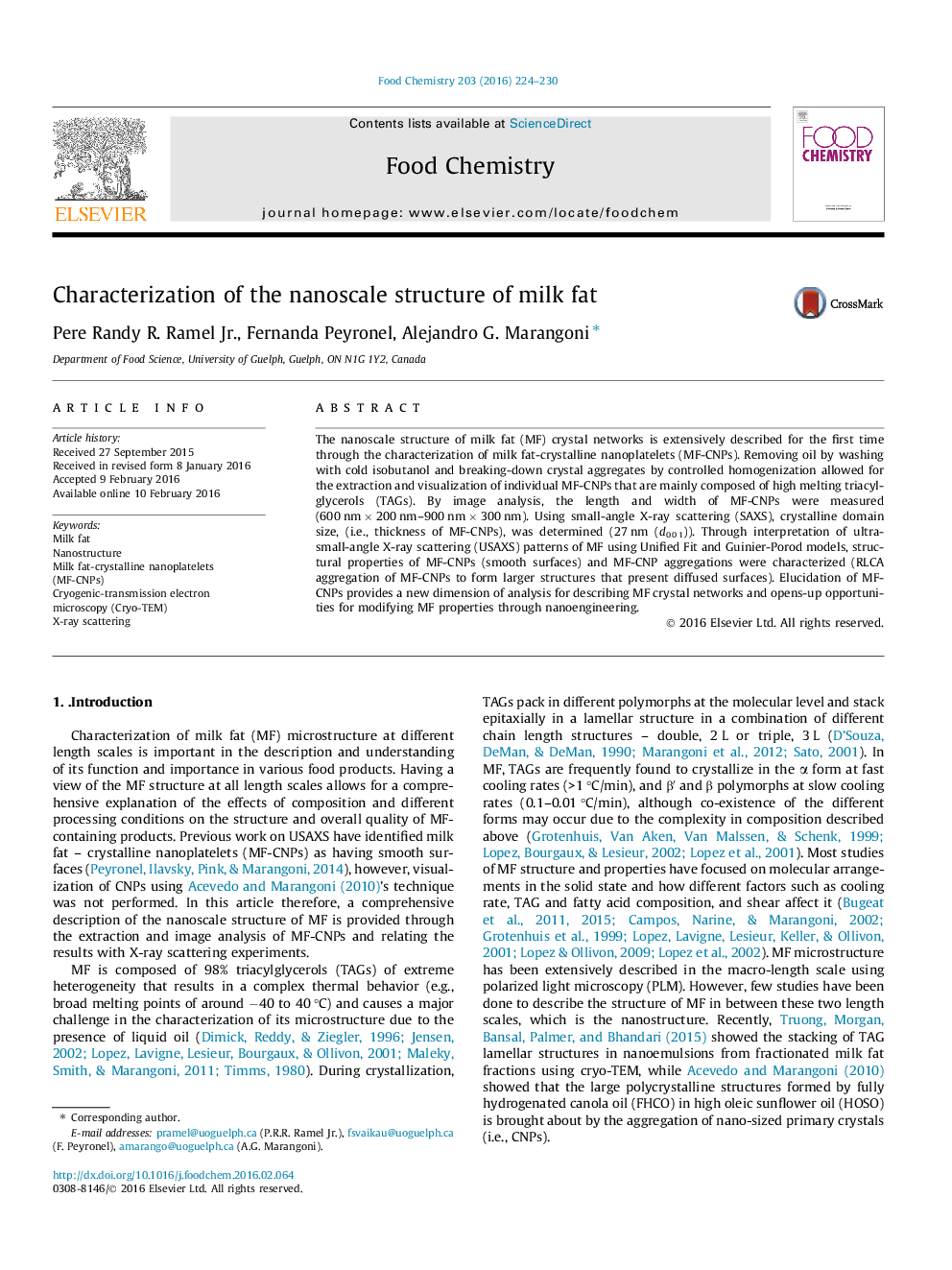| Article ID | Journal | Published Year | Pages | File Type |
|---|---|---|---|---|
| 7589040 | Food Chemistry | 2016 | 7 Pages |
Abstract
The nanoscale structure of milk fat (MF) crystal networks is extensively described for the first time through the characterization of milk fat-crystalline nanoplatelets (MF-CNPs). Removing oil by washing with cold isobutanol and breaking-down crystal aggregates by controlled homogenization allowed for the extraction and visualization of individual MF-CNPs that are mainly composed of high melting triacylglycerols (TAGs). By image analysis, the length and width of MF-CNPs were measured (600 nm Ã 200 nm-900 nm Ã 300 nm). Using small-angle X-ray scattering (SAXS), crystalline domain size, (i.e., thickness of MF-CNPs), was determined (27 nm (d0 0 1)). Through interpretation of ultra-small-angle X-ray scattering (USAXS) patterns of MF using Unified Fit and Guinier-Porod models, structural properties of MF-CNPs (smooth surfaces) and MF-CNP aggregations were characterized (RLCA aggregation of MF-CNPs to form larger structures that present diffused surfaces). Elucidation of MF-CNPs provides a new dimension of analysis for describing MF crystal networks and opens-up opportunities for modifying MF properties through nanoengineering.
Related Topics
Physical Sciences and Engineering
Chemistry
Analytical Chemistry
Authors
Pere Randy R. Jr., Fernanda Peyronel, Alejandro G. Marangoni,
